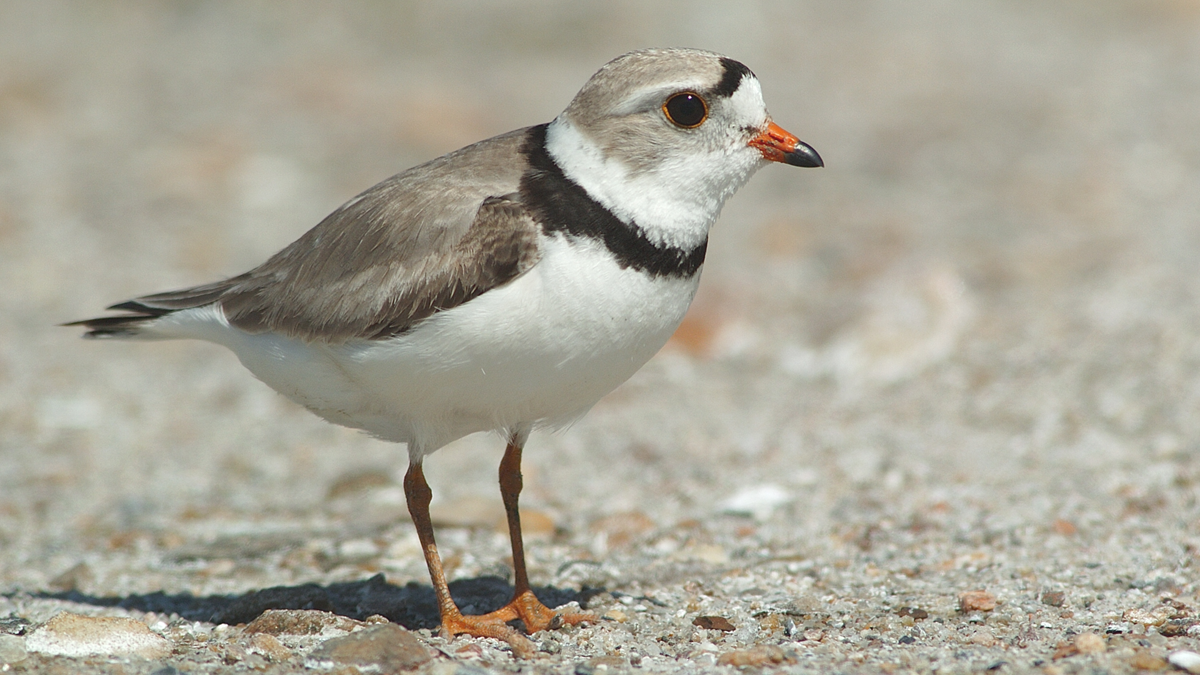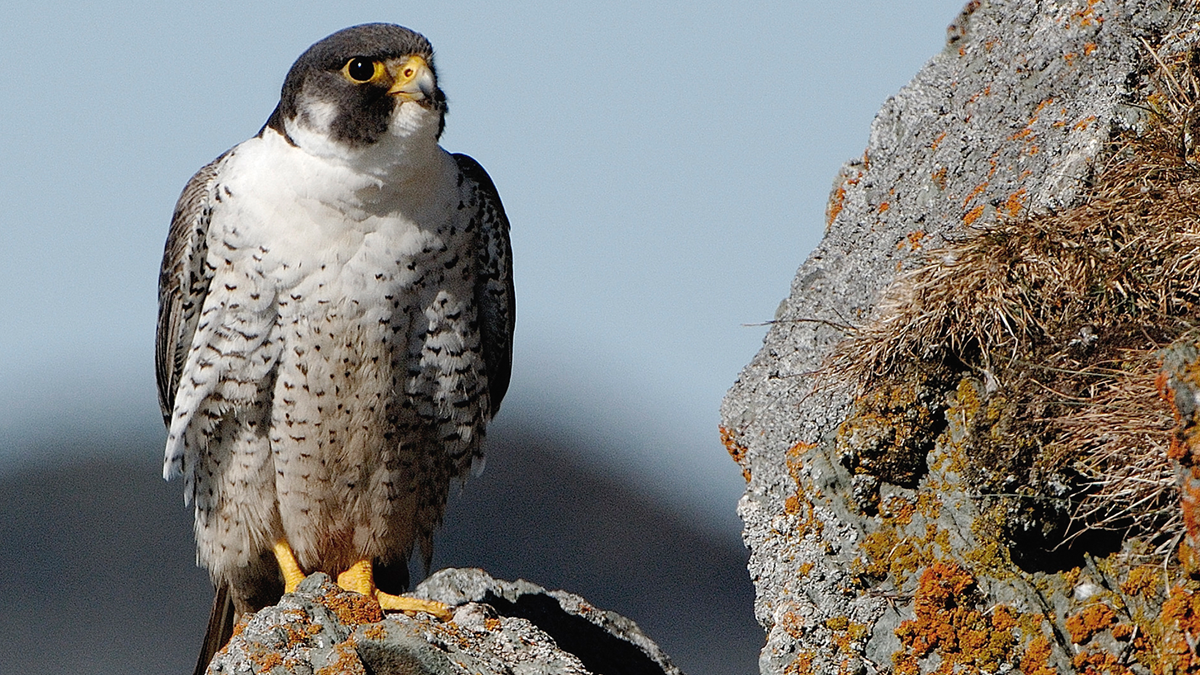Non-urgent government operations are closed December 24 to January 1, reopening January 2. View available services during this period.
Overview
Birds are warm-blooded vertebrates that generally possess the ability to fly. Feathers are the key characteristic distinguishing them from other vertebrates.
Alberta is home to a wide variety of birds, including songbirds, waterfowl, shorebirds, birds of prey and many others, several of which are at the northern or eastern edge of their breeding range. Birds represent the most numerous group of vertebrates found in the province.
The majority of bird species found in Alberta are migratory. These species typically move from their wintering ranges in the southern United States and Central and South America to their summer breeding areas in Alberta. Many species even migrate thousands of kilometres (one way). Some bird species are year-round residents that do not migrate, while a few birds come to Alberta specifically during the winter from more northern, Arctic regions.
Several sites within the province have been designated as Important Bird Areas, recognizing their global significance for the conservation of birds and their habitats.
Major threats to bird species include habitat loss and fragmentation, predation, disease, competition from invasive species, climate change and collisions with human structures.
General status
In 2020, 424 native bird species currently present in Alberta were included in the general status assessment (see Figures 1 and 2).
- 218 bird species (51%) were ranked secure
- 54 bird species (13%) were ranked sensitive
- 11 bird species (3%) were ranked may be at risk
- 8 bird species (2%) were known to be at risk
- 13 bird species (3%) were undetermined
- 120 bird species (28%) were ranked accidental or vagrant
Three bird species are no longer thought to be present in Alberta (extirpated) or anywhere in the world (extinct):
- Greater Prairie Chicken (Tympanuchus cupido) is ranked extirpated
- Northern Curlew (Numenius borealis) is thought to be extinct
- Passenger Pigeon (Ectopistes migratorius) is extinct
Thirty previously not assessed species were ranked between 2000 and 2020, leaving no bird species unassessed in 2020 (see Figures 1 and 2).
Four bird species were ranked with an improved general status between 2000 and 2020:
- Baird's Sparrow (Centronyx bairdii)
- Osprey (Pandion haliaetus)
- Swainson's Hawk (Buteo swainsoni)
- Trumpeter Swan (Cygnus buccinator)
Twenty-two birds were ranked with a decreased general status between 2000 and 2020:
- American Kestrel (Falco sparverius)
- Bank Swallow (Riparia riparia)
- Barn Swallow (Hirundo rustica)
- Canada Warbler (Wilsonia canadensis)
- Chestnut-collared Longspur (Calcarius ornatus)
- Clark's Grebe (Aechmophorus clarkia)
- Clark's Nutcracker (Nucifraga columbiana)
- Common Yellowthroat (Geothlypis trichas)
- Eared Grebe (Podiceps nigricollis)
- Eastern Kingbird (Tyrannus tyrannus)
- Eastern Phoebe (Sayornis phoebe)
- Great-crested Flycatcher (Myiarchus crinitus)
- Hudsonian Godwit (Limosa haemastica)
- Lark Bunting (Calamospiza melanocorys)
- McCown's Longspur (Calcarius mccownii)
- Mountain Plover (Charadrius montanus)
- Olive-sided Flycatcher (Contopus cooperi)
- Red Knot (Calidris canutus)
- Rusty Blackbird (Euphagus carolinus)
- Sora (Porzana carolina)
- Western Grebe (Aechmophorus occidentalis)
- Western Wood-pewee (Contopus sordidulus)
Among all birds, grebes have the highest proportion of species ranked ‘at risk’ and ‘may be at risk’, followed by falcons and owls (see Figure 3a). Perching birds (passerines) are the most numerous and diverse bird group, followed by shorebirds and waterfowl (see Figures 3a and 3b).
Detailed status
As of January 2024, 18 species of birds have detailed status designations including 8 listings under Alberta’s Wildlife Act.
Six species are listed as Endangered under the Wildlife Act:
- Burrowing Owl (Athene cunicularia)
- Ferruginous Hawk (Buteo regalis)
- Mountain Plover (Charadrius montanus)
- Piping Plover (Charadrius melodus)
- Sage Grouse (Centrocercus urophasianus)
- Whooping Crane (Grus americana)
Two species are listed as Threatened under the Wildlife Act:
- Peregrine Falcon (Falco peregrinus)
- Western Grebe (Aechmophorus occidentalis)
Ten species have a detailed status of Special Concern:
- Barred Owl (Strix varia)
- Black-throated Green Warbler (Dendroica virens)
- Canada Warbler (Cardellina canadensis)
- Harlequin Duck (Histrionicus histrionicus)
- Loggerhead Shrike (Lanius ludovicianus)
- Long-billed Curlew (Numenius americanus)
- Prairie Falcon (Falco mexicanus)
- Sprague’s Pipit (Anthus spragueii)
- Trumpeter Swan (Cygnus buccinator)
- White-winged Scoter (Melanitta deglandi)
Two additional bird species have recommendations for Endangered status:
- Chestnut-collared Longspur (Calcarius ornatus)
- Thick-billed Longspur (Rhynchophanes mccownii)
Two species have recommendations for Special Concern status:
- Bay-breasted Warbler (Dendroica castanea)
- Cape May Warbler (Dendroica tigrina)
Resources
- ABMI Biodiversity Browser Birds
- Nature Alberta – Birds
- Nature Alberta – Important Bird Areas
- eBird Alberta
- Official List of the Birds of Alberta (Alberta Bird Record Committee)
- Alberta Rare Bird Records (University of Lethbridge)
- Cornell Lab of Ornithology – All about Birds
Charts
Figure 1. Number of native bird species and their general status ranks in Alberta between 2000 and 2020
Chart data table
| Year | Secure | Sensitive | May be at risk | At risk | Extirpated/Extinct | Not Assessed | Undetermined | Accidental/Vagrant |
|---|---|---|---|---|---|---|---|---|
| 2000 | 234 | 45 | 3 | 7 | 3 | 30 | 14 | 92 |
| 2005 | 217 | 61 | 4 | 8 | 3 | 27 | 13 | 94 |
| 2010 | 215 | 63 | 4 | 8 | 3 | 27 | 13 | 94 |
| 2015 | 219 | 54 | 9 | 8 | 3 | 27 | 13 | 94 |
| 2020 | 218 | 54 | 11 | 8 | 3 | 13 | 120 |
Accessible chart description
Stacked bar graph showing the general status ranks of Alberta’s 424 native bird species over time in 5-year intervals from 2000 until the latest assessment in 2020. In 2020, 218 bird species (51%) were ranked secure, 54 bird species (13%) were ranked sensitive, 11 bird species (3%) were ranked may be at risk, 8 bird species (2%) were known to be at risk, 13 bird species (3%) were undetermined, and 120 bird species (28%) were ranked accidental/vagrant. Between 2000 and 2020, 4 bird species were ranked with an improved general status while 22 birds were ranked with a decreased general status. 30 previously not assessed species were ranked between 2000 and 2020, leaving no bird species unassessed in 2020.
Figure 2. Proportion of general status ranks for Alberta’s native bird species in 2020
Chart data table
| Label | Count of species |
|---|---|
| Secure | 218 |
| Sensitive | 54 |
| May be at risk | 11 |
| At risk | 8 |
| Extirpated/Extinct | 3 |
| Undetermined | 13 |
| Accidental/Vagrant | 120 |
Accessible chart description
Pie chart showing the proportion of general status ranks for Alberta’s 424 native bird species in 2020. Total number of bird species and the respective percentage are provided for each general status rank. In 2020, 218 bird species (51%) were ranked secure, 54 bird species (13%) were ranked sensitive, 11 bird species (3%) were ranked may be at risk, 8 bird species (2%) were known to be at risk, 13 bird species (3%) were undetermined, and 120 bird species (28%) were ranked accidental/vagrant.
Figure 3a. Number of native bird species and their general status ranks by taxonomic order in 2020
Chart data table
| Year | Secure | Sensitive | May be at risk | At risk | Extirpated/Extinct | Not Assessed | Undetermined | Accidental/Vagrant |
|---|---|---|---|---|---|---|---|---|
| Woodpeckers and allies | 6 | 2 | 1 | 5 | ||||
| Pigeons and doves | 1 | 1 | 2 | |||||
| Pelicans, herons, ibises and allies | 5 | 7 | ||||||
| Owls | 6 | 3 | 1 | 1 | 4 | |||
| Nightjars, hummingbirds, swifts and allies | 3 | 1 | 1 | 1 | 8 | |||
| New World Vultures | 1 | 1 | ||||||
| Loons | 3 | 1 | ||||||
| Kingfishers | 1 | |||||||
| Hawks, eagles, kites and allies | 7 | 4 | 1 | |||||
| Gulls, terns, plovers, sandpipers and allies | 38 | 6 | 2 | 2 | 1 | 2 | 31 | |
| Grouse, ptarmigan and allies | 5 | 1 | 1 | 1 | 2 | |||
| Grebes | 1 | 3 | 1 | 1 | ||||
| Falcons and caracaras | 2 | 2 | 1 | 1 | ||||
| Ducks, geese, swan and allies | 29 | 3 | 10 | |||||
| Cuckoos | 1 | 1 | ||||||
| Cranes, rails and allies | 1 | 2 | 1 | 2 | 2 |
Accessible chart description
Stacked bar graph showing the general status ranks of Alberta’s native bird species grouped by 17 taxonomic orders for non-perching birds, including cranes, falcons, grouse, gulls, hawks, owls, pigeons and woodpeckers, among others. Gulls and allies make up the largest order of birds followed by ducks and allies. Grebes have the highest proportion of species ranked ‘at risk’ and ‘may be at risk’, followed by falcons and owls.
Figure 3b. Number of perching bird species and their general status ranks in 2020
Chart data table
| Year | Secure | Sensitive | May be at risk | Undetermined | Accidental/Vagrant |
|---|---|---|---|---|---|
| Perching birds | 113 | 22 | 6 | 6 | 45 |
Accessible chart description
Stacked bar graph showing the general status ranks of Alberta’s native perching bird species in 2020. Perching birds (also called passerines) are the most numerous and diverse bird group. The majority of perching birds were ranked secure in 2020 (113 species) while 22 perching birds were ranked sensitive, 6 birds were ranked maybe at risk, 6 perching birds were undetermined and 45 birds were ranked accidental.


